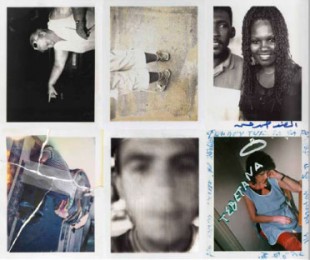The billboards seize our attention: A young girl, cowering in the corner of a brothel. Her hands are bound, her clothes are torn, and her face shows only a hint of hope. “Sonya is just one of the 28 million people enslaved in the world today,” the sign said. “What would Harriet Tubman do?”

These photos are from the project titled "Open See" by American photographer Jim Goldberg. Goldberg's project documents "the story of refugees, immigrants and trafficked individuals journeying from their countries of origin to their new homes in Europe. This project addresses the struggle of immigrants to leave conditions where war, disease and economic devastation prevail," he writes on the project's website, www.opensee.org.
Americans fought a bloody and intimate war to annihilate an evil built into our nation’s constitution, but somehow it seems we have again become a nation in need of abolition. Though we still grapple with the geographical, socio-economic and racial repercussions of the Civil War, if anything seemed certain, it was that with it, we had vanquished slavery.
But then, around the 1990s, something changed. Here came these billboards and magazine ads. Here came the news stories about kidnapped girls sold into Houston brothels, Malaysian immigrants imprisoned as domestic workers in suburban Sugar Land, and men who are thrown overboard if they complain about being forced to live and work on the fishing boats supplying Whole Foods’ sustainable fish. And finally, here is the story naming Houston the capital of human trafficking in the United States.
Because many people believed slavery was eradicated with the 13th Amendment, these stories seemed to come from nowhere. But the truth is, slavery never went away. It has simply changed forms. Today, the United Nations defines human trafficking and modern slavery as “the recruitment, transportation, transfer, harboring or receipt of persons, by means of the threat or use of force or other forms of coercion, of abduction, of fraud, of deception, of the abuse of power … for the purpose of exploitation.”
The breadth of forces that lead to modern human trafficking are complicated. Efforts to understand and change the way the public understands them have been front and center at Rice University this past year, where the inaugural Rice Seminar was led by history faculty James Sidbury and Kerry Ward. The seminar’s title, “Human Trafficking — Past and Present: Crossing Disciplines, Crossing Borders,” pointed to the scope and aspirations of their project.
A Humanities Think Tank
The Rice Seminar is itself a revolutionary project. Its mission is to engage a new humanistic question every year by creating an interdisciplinary, international humanities think tank unique to Rice University. The annual seminar is the brainchild of Dean of Humanities Nicolas Shumway, a Latin American scholar who came to Rice from the University of Texas at Austin in 2010. It is funded by the Humanities Research Center and the School of Humanities.
“Rice may be the only university with a humanities think tank,” said Shumway, who also noted that most think tanks have a political agenda. “They tend to sideline history.”
To create the seminars, a cohort of visiting researchers are brought to Rice for the entire academic year. The researchers live in Houston, and they form part of the group that includes at least six representatives of Rice, including faculty, postdocs and graduate students. An undergraduate course run by the Humanities Research Center every year also engages the seminar’s topic. Finally, to engage the public — including human trafficking activists — in this year’s topic, the seminar leaders organized an innovative lecture series called Houston Connections.
Read the full story at http://issuu.com/riceuniversity/docs/rice-magazine-summer-2013/34


Leave a Reply